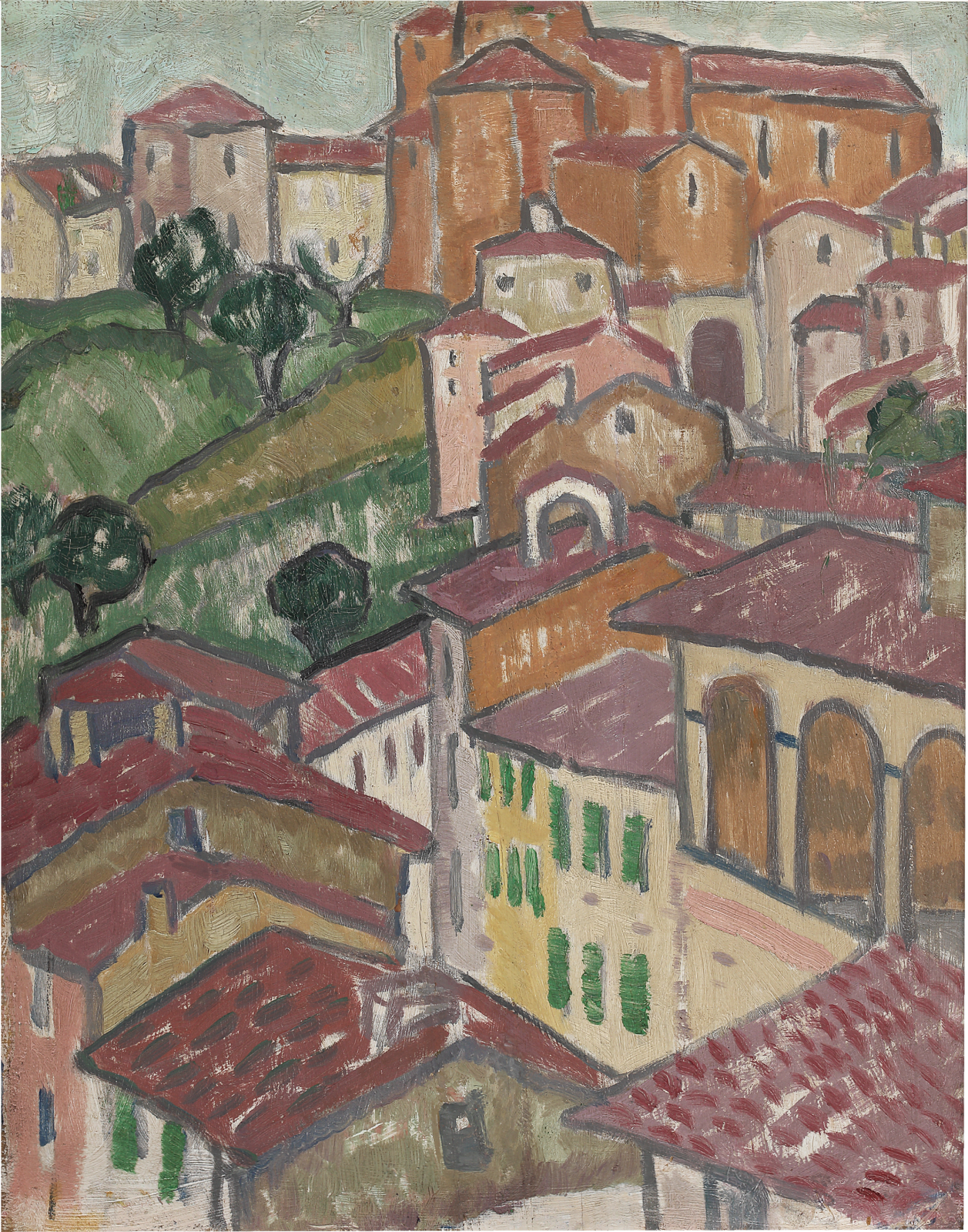
Jessica Dismorr
Jessica Dismorr was an experimental and virulent force within twentieth-century modernism in Britain. A frontrunner of British abstraction, a signatory of the radical Vorticist movement, and a politically engaged professional artist, Dismorr’s artistic imprint on British art is marked. Her early works position her as an overlooked, leading exponent of the Fauve style. Painted during her formative years as a truly modern artist, the present work demonstrates her move away from traditional realism in favour of contemporary European trends.
This landscape was painted during what Art Historian Alicia Foster deems Dismorr’s ‘Rhythm years’.[1] Rhythm was an artistic movement largely pioneered by Fergusson which advocated for an advance in the vitality of visual arts and celebrated the bright Fauvist colour palette. The present work epitomises the aesthetic philosophy of the Rhythm group, particularly in its linear contouring and colour blocking. Adhering to the Fauvist technique, Dismorr has outlined the contours of each form in a dark grey to unify the composition. The result is a work that prioritises surface pattern and technique over traditional depth and perspective.
As a colourist, Dismorr was largely unrivalled within the Rhythm group, although her work does share similarities with other members, particularly Marguerite Zorach (née Thompson). Dismorr and Zorach had shared a studio in 1910 and their resulting influence on each other is prominent in works such as this. In c.1910-1911, Dismorr and Zorach travelled together to France and Italy the present work was completed during this sojourn. The trip was a resounding success and both artists produced respective bodies of works that remain hallmarks of their early careers. On her return in 1912, Dismorr exhibited with the Rhythm group at the Stafford Gallery, London, including Italian scenes. This work, produced in the years before she made her name as a signatory of the vorticist movement, demonstrates her early propensity toward the avant-garde.
Dismorr began her artistic training at the Slade Slade School of Fine Art in London, which was the only art school of the period that permitted women to study from life models. She furthered her training in France, where she studied in Étaples, at the art school run by Max Bohm, and later at the Academie de la Palette in Paris. At la Palette, Dismorr studied under the Scottish colourist John Duncan Fergusson whose fauvist sympathies influenced Dismorr significantly during her early career. Dismorr was also influenced by Anne Estelle Rice, Fergusson’s wife, who had begun painting shortly before Dismorr enrolled at la Palette. During this period, all three artists engaged with fauvist theories of colour, as evidenced in the present landscape.
[1] A. Foster, Radical Women: Jessica Dismorr and her Contemporaries. London: Lund Humpries, 2019.Provenance
The artist's nephew;
Christie's London, British and Irish Modernist and Contemporary
Paintings, 9 March 1990, Lot 223;
Sandra Lununis Fine Art, London;
Private collection, UK until 2023.